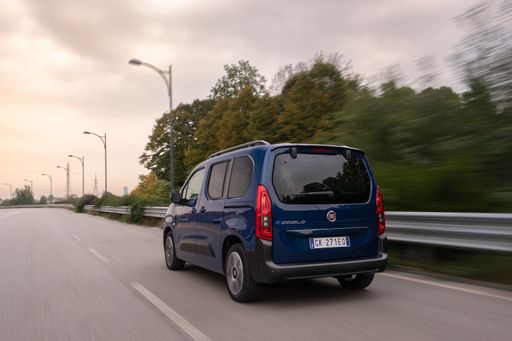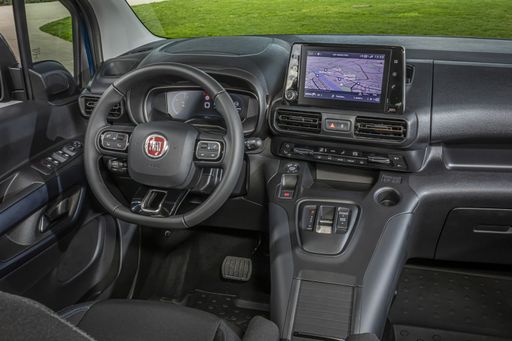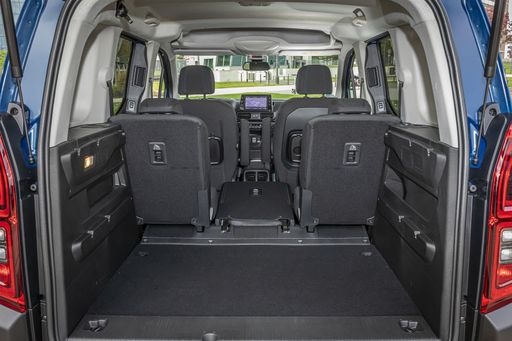Fiat Doblò Van vs Vauxhall Combo Cargo - Differences and prices compared
Costs and Efficiency:
Price and efficiency are key factors when choosing a car – and this is often where the real differences emerge.
Fiat Doblò Van has a to a small extent advantage in terms of price – it starts at 20300 £, while the Vauxhall Combo Cargo costs 22400 £. That’s a price difference of around 2142 £.
Fuel consumption also shows a difference: manages with and is therefore more efficient than the with . The difference is about per 100 km.
In terms of energy consumption, the advantage goes to the : with per 100 km, it’s more efficient than the with . That’s a difference of about .
As for range, the performs better – achieving up to , about more than the .
Engine and Performance:
Power, torque and acceleration say a lot about how a car feels on the road. This is where you see which model delivers more driving dynamics.
When it comes to engine power, the has a edge – offering compared to . That’s roughly more horsepower.
In terms of top speed, the performs better – reaching , while the tops out at . The difference is around .
There’s also a difference in torque: pulls stronger with compared to . That’s about difference.
Space and Everyday Use:
Cabin size, boot volume and payload all play a role in everyday practicality. Here, comfort and flexibility make the difference.
Seats: Vauxhall Combo Cargo offers a bit more seating capacity – 6 vs 5.
In curb weight, is lighter – compared to . The difference is around .
In maximum load capacity, the Fiat Doblò Van performs a bit better – up to 4400 L, which is about 500 L more than the Vauxhall Combo Cargo.
When it comes to payload, takes the win – compared to . That’s a difference of about .
Who wins the race?
The Fiat Doblò Van proves to be edges out slightly and therefore becomes our DriveDuel Champion!
Fiat Doblò Van is the better all-rounder in this comparison.
 @ Fiat / Stellantis Media
@ Fiat / Stellantis Media
Fiat Doblò Van
Costs and Consumption
View detailed analysis
Engine and Performance
View detailed analysis
Dimensions and Body
View detailed analysis
Fiat Doblò Van
The Fiat Doblò is a no-nonsense workhorse that blends surprising cabin comfort with sensible practicality, turning long days on the road into something tolerable rather than torturous. Clever packaging and steady, uncomplicated manners make it a smart pick for small businesses and weekend warriors who want function without fuss.
details @ Fiat / Stellantis Media
@ Fiat / Stellantis Media
 @ Fiat / Stellantis Media
@ Fiat / Stellantis Media
 @ Fiat / Stellantis Media
@ Fiat / Stellantis Media
 @ Fiat / Stellantis Media
@ Fiat / Stellantis Media
Vauxhall Combo Cargo
The Opel Combo Cargo is a pragmatic workhorse that pairs sensible practicality with surprisingly car-like manners, making it a smart choice for small businesses and weekend DIYers. With clever storage, easy access and a calm cabin that keeps the focus on the job, it turns daily deliveries and errands into something almost enjoyable.
details
 @ Fiat / Stellantis Media
@ Fiat / Stellantis Media
|
|
|
|
|
Costs and Consumption |
|
|---|---|
|
Price
20300 - 33800 £
|
Price
22400 - 34700 £
|
|
Consumption L/100km
5.2 - 6.3 L
|
Consumption L/100km
5.2 - 6.3 L
|
|
Consumption kWh/100km
17.40 kWh
|
Consumption kWh/100km
17.40 kWh
|
|
Electric Range
354 km
|
Electric Range
354 km
|
|
Battery Capacity
-
|
Battery Capacity
-
|
|
co2
0 - 143 g/km
|
co2
0 - 143 g/km
|
|
Fuel tank capacity
53 - 61 L
|
Fuel tank capacity
53 - 61 L
|
Dimensions and Body |
|
|---|---|
|
Body Type
Cargo Van
|
Body Type
Cargo Van
|
|
Seats
2 - 5
|
Seats
2 - 6
|
|
Doors
4 - 5
|
Doors
4 - 5
|
|
Curb weight
1329 - 1813 kg
|
Curb weight
1329 - 1813 kg
|
|
Trunk capacity
-
|
Trunk capacity
-
|
|
Length
4403 - 4753 mm
|
Length
4401 - 4751 mm
|
|
Width
1848 mm
|
Width
1848 mm
|
|
Height
1796 - 1812 mm
|
Height
1820 - 1825 mm
|
|
Max trunk capacity
3300 - 4400 L
|
Max trunk capacity
3300 - 3900 L
|
|
Payload
611 - 991 kg
|
Payload
611 - 991 kg
|
Engine and Performance |
|
|---|---|
|
Engine Type
Petrol, Diesel, Electric
|
Engine Type
Diesel, Petrol, Electric
|
|
Transmission
Manuel, Automatic
|
Transmission
Manuel, Automatic
|
|
Transmission Detail
Manual Gearbox, Automatic Gearbox, Reduction Gearbox
|
Transmission Detail
Manual Gearbox, Automatic Gearbox, Reduction Gearbox
|
|
Drive Type
Front-Wheel Drive
|
Drive Type
Front-Wheel Drive
|
|
Power HP
102 - 136 HP
|
Power HP
102 - 136 HP
|
|
Acceleration 0-100km/h
-
|
Acceleration 0-100km/h
11.20 s
|
|
Max Speed
135 - 183 km/h
|
Max Speed
135 - 183 km/h
|
|
Torque
205 - 300 Nm
|
Torque
205 - 300 Nm
|
|
Number of Cylinders
3 - 4
|
Number of Cylinders
3 - 4
|
|
Power kW
75 - 100 kW
|
Power kW
75 - 100 kW
|
|
Engine capacity
1199 - 1499 cm3
|
Engine capacity
1199 - 1499 cm3
|
General |
|
|---|---|
|
Model Year
2024
|
Model Year
2024
|
|
CO2 Efficiency Class
E, A
|
CO2 Efficiency Class
E, A
|
|
Brand
Fiat
|
Brand
Vauxhall
|
What drivetrain options does the Fiat Doblò Van have?
Available configurations include Front-Wheel Drive.
The prices and data displayed are estimates based on German list prices and may vary by country. This information is not legally binding.
